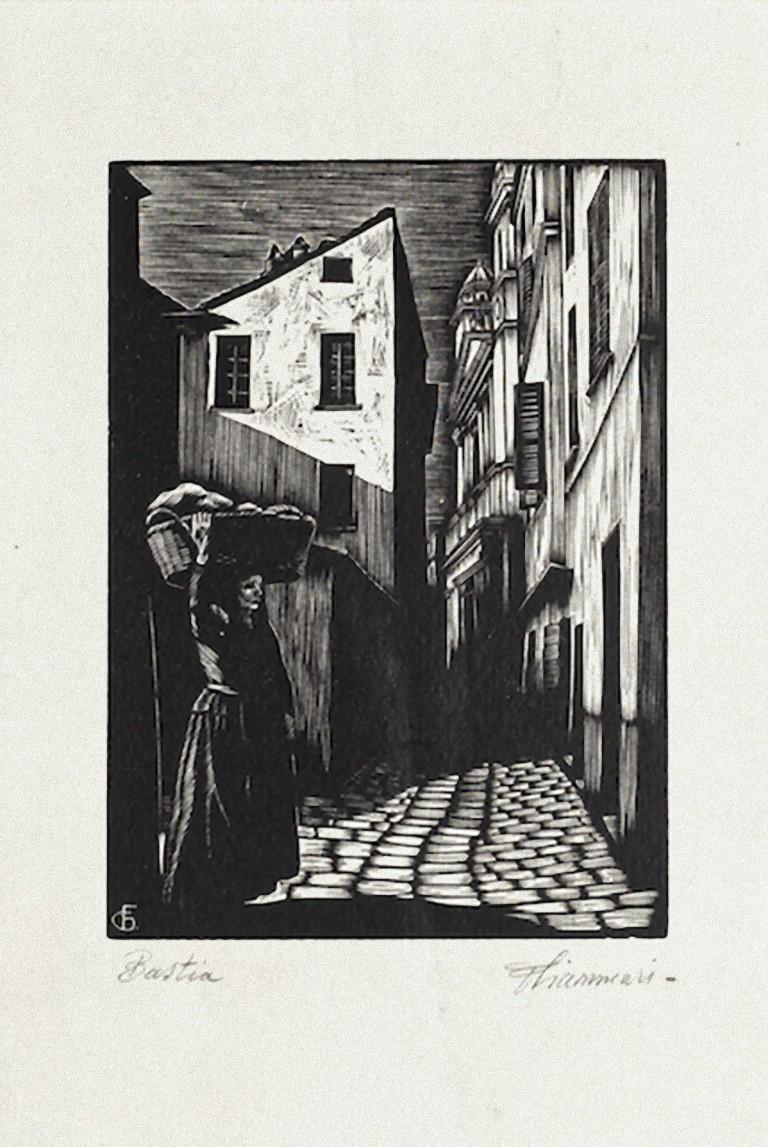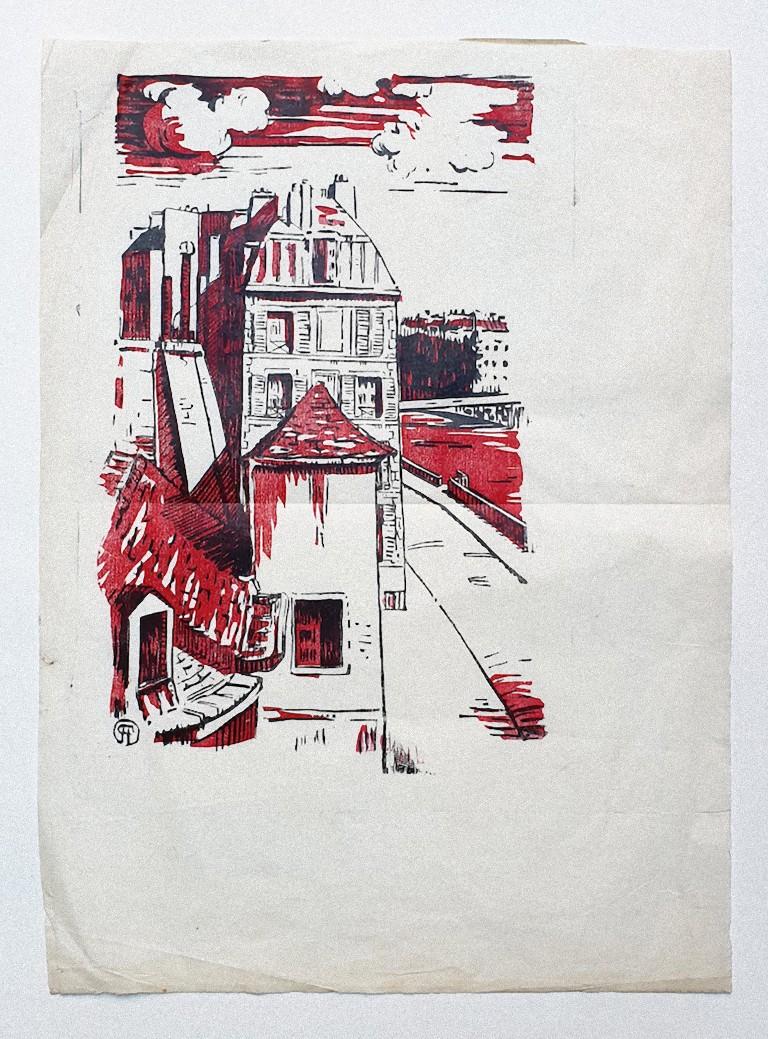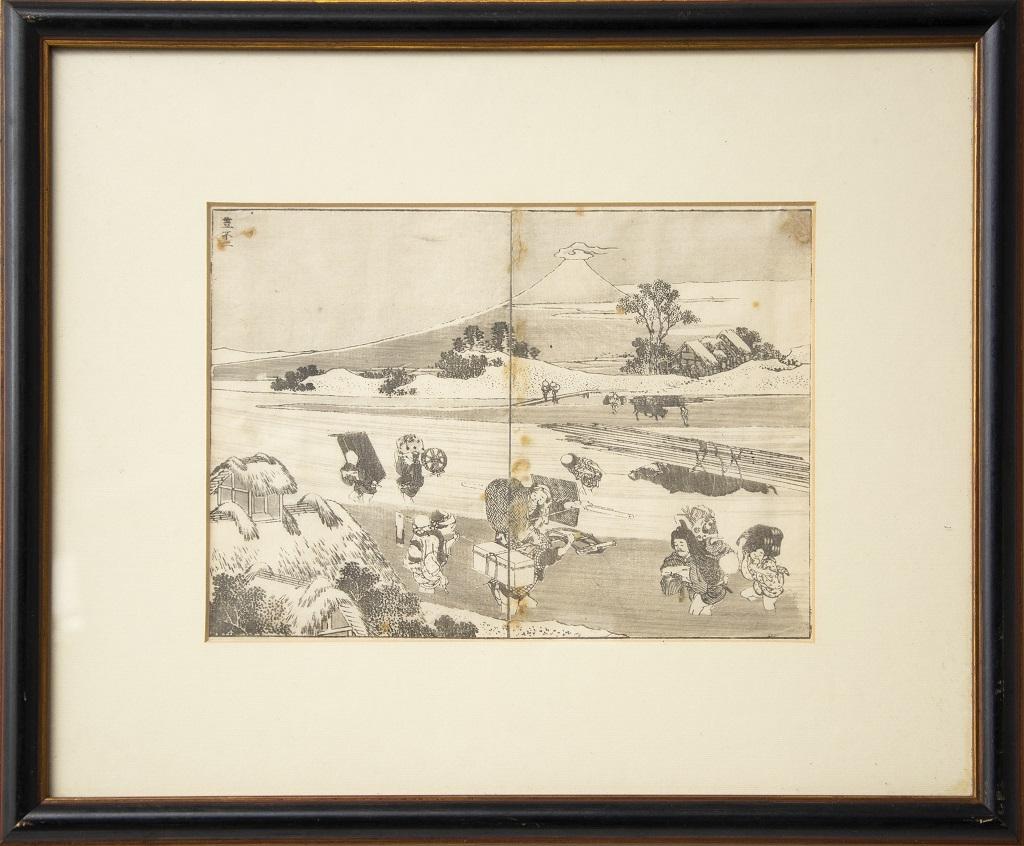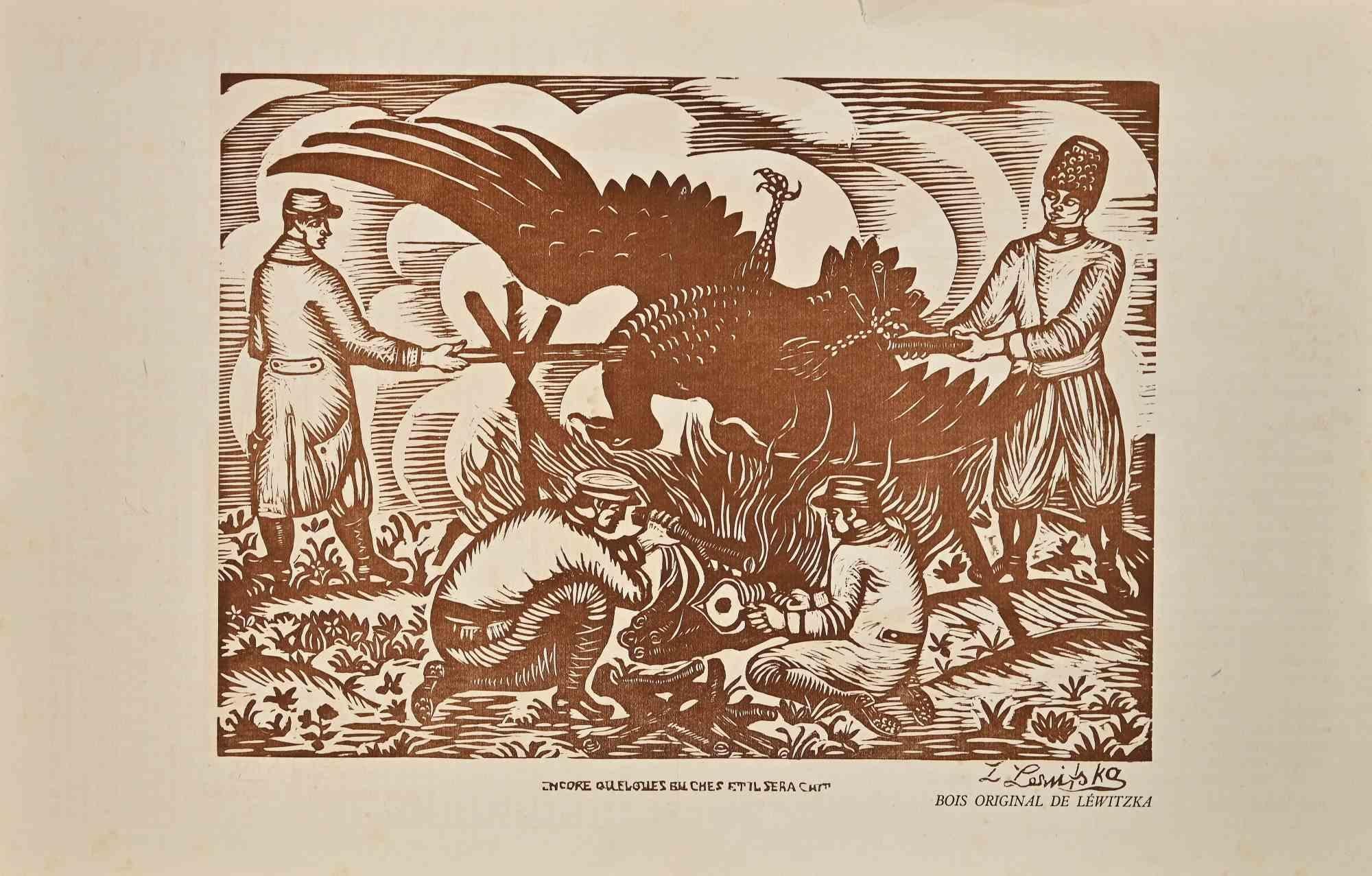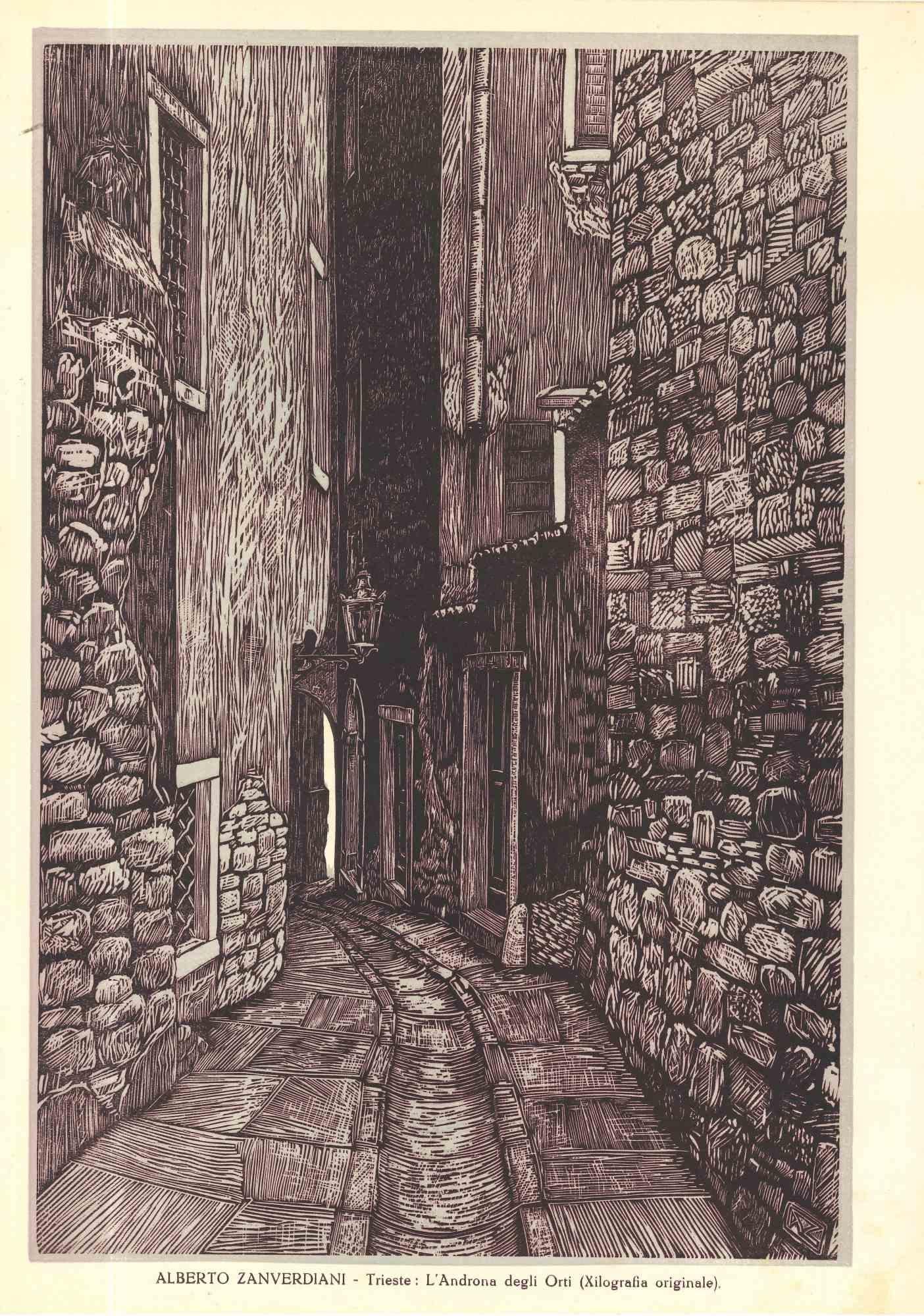Kiyoshi SaitōDAITOKUJI KYOTO1957
1957
About the Item
- Creator:Kiyoshi Saitō (1907 - 1997, Japanese)
- Creation Year:1957
- Dimensions:Height: 15 in (38.1 cm)Width: 20.625 in (52.39 cm)
- Medium:
- Movement & Style:
- Period:
- Condition:
- Gallery Location:Santa Monica, CA
- Reference Number:1stDibs: LU411311806442
Kiyoshi Saitō
Kiyoshi Saito was born in Fukushima Prefecture in 1907. At the age of five, he moved to Otaru in Hokkaido, where he would come to serve as an apprentice to a sign painter. Saito became infatuated with art after studying drawing with Gyokusen Narita and moved to Tokyo in 1932 to study Western-style painting at the Hongo Painting Institute. He began experimenting with woodblock prints and exhibiting his works with Nihon Hanga Kyōkai in 1936. Saito mainly worked in oil painting until his invitation from Tadashige Ono to join the Zokei Hanga Kyokai in 1938, at which time Saito made the woodblock print his primary medium. He worked with the Asahi Newspaper Company in 1943, where he met Kōshirō Onchi. This chance encounter led to an invitation to Ichimoku Kai and membership to Nihon Hanga Kyōkai in 1944.
Saito’s printmaking career was put on hold due to the war. During the occupation, he sold his first print in an exhibit with fellow artists Un’ichi Hiratsuka and Hide Kawanishi. In 1948, Saito exhibited at the Salon Printemps, an event sponsored by Americans for Japanese Artists. At the Sao Paulo Biennale of 1951, Saito won first place for his print Steady Gaze. In competition with Japanese oil painting and sculpture, this was a turning point for Japanese printmakers: For the first time in Japanese history, prints overtook painting. This achievement roused the Japanese art establishment. In 1956, Saito was sponsored by the state department and the Asia Foundation to travel and exhibit around the United States and Europe. As a sōsaku-hangaartist, Saito’s prints are self-drawn, self-carved and self-printed. His early works are distinguished by an attention to realism and three-dimensionality. As his style evolved, his prints became flattened and two-dimensional, featuring strong and refined designs with color and texture. Kiyoshi Saito passed away in 1997.
- ShippingRetrieving quote...Ships From: Santa Monica, CA
- Return PolicyA return for this item may be initiated within 7 days of delivery.
- LANTERN ON A HILL - NIKKO - AUTUMNLocated in Santa Monica, CALILIAN MILLER (1895 - 1943) LANTERN ON A HILL - NKKO - AUTUMN, 1934 (Brown 104) Color woodcut, signed and dated in ink in the image. Titled in pencil by the artist at lower sheet edge. Circular, 10 inches in diameter. Beautiful fresh impression In very good condition with full margins, sheet 10 5/8 x 10 1/2 inches. Miller carried on a tradition started by woman, Americans Helen Hyde, Berta Lum and Englishwoman Elizabeth Keith, who learned and used Japanese color woodcut making techniques in the first part of the 20th century. Illustrated in "Between Two Worlds - The Life and Art of Lilian May Miller...Category
1930s Modern Landscape Prints
MaterialsColor, Woodcut
- JonahBy Sadao WatanabeLocated in Santa Monica, CASADAO WATANABE (Japanese 1913-1996) JONAH, 1959 Color stencil, signed, numbered and dated in white ink. Sheet, 25 5/8 x 22 5/8 inches. Edition: 44/50. Good color and generally good ...Category
1950s Modern Figurative Prints
MaterialsStencil, Woodcut
- Ship RockBy Norma Bassett HallLocated in Santa Monica, CANORMA BASSETT HALL (1889 - 1957) SHIP ROCK, c. 1940 Color woodcut signed and numbered in pencil, edition 40 on stiff fibrous paper. 10 x 14 inches, Sheet size 11 1/8 x 15 inches...Category
1940s American Modern Landscape Prints
MaterialsWoodcut
- LOTUS FLOWER - ROEDING PARK - Provincetown StyleBy Mary TravisLocated in Santa Monica, CAMARY TRAVIS (Active 1935 - 40) LOTUS FLOWER ROEDING PARK. c.1935-40 White line color woodcut. Signed and titled in pencil. Small edition. 10” x 8”. Full sheet. tears in upper margin. Travis worked in Berkeley, California and was probably a follower of William S...Category
1930s American Modern Landscape Prints
MaterialsWoodcut
- LOTUS FLOWER - Provincetown StyleBy Mary TravisLocated in Santa Monica, CAMARY TRAVIS (1893-1976)) LOTUS FLOWER c. 1935-40 White line color woodcut. Signed and titled in pencil. Small edition. 9 ¾” x 7 7/8”. Full sheet. Some creasing in the margins. Travis worked in Berkeley, California and was probably a follower of William S...Category
1940s American Modern Landscape Prints
MaterialsWoodcut
- THE SUNFLOWERLocated in Santa Monica, CAANDERS ALDRIN (Swedish /American 1889 – 1970) THE SUNFLOWER ca. 1935 (Newark Museum 9) Color woodcut, edition c. 150. Signed, unnumbered, but dedicat...Category
1930s American Modern Landscape Prints
MaterialsWoodcut
- Beast - Woodcut by F. Chiammari - 1960 ca.Located in Roma, ITBeast is an original woodcut realized by F. Chiammari in 1960 ca. Hand-signed on the lower right margin and titled on the lower left in pencil. In excellent conditions. Included a...Category
1960s Modern Figurative Prints
MaterialsWoodcut
- Riverside Houses - Woodcut on Paper - 20th CenturyLocated in Roma, ITRiverside Houses is an original woodcut on paper realized by an Anonymous artist of the XX century. With the monogram of the artist on the lower left....Category
20th Century Modern Figurative Prints
MaterialsWoodcut
- View of Mount Fuji - Woodcut after K. Hokusai - 1878By Katsushika HokusaiLocated in Roma, ITView of Mount Fuji is a modern artwork realized after Katsushika Hokusai (31 October 1760 – 10 May 1849). Woodcut print from the series "Fugaku hyakkei" (100 views of Mount Fuji). ...Category
1870s Modern Landscape Prints
MaterialsWoodcut
- Great Spit-on Bird - Original Woodcut by Sonia Léwitzka - Early 20th CenturyLocated in Roma, ITGreat Spit-on Bird is an Original woodcut print realized by Sonia Léwitzka. Good condition on acream colored paper. Signature on the lower right corner. On the back of the paper, ...Category
Early 20th Century Modern Figurative Prints
MaterialsWoodcut
- L'Androne degli Orti - Woodcut by A. Zanverdiani - Early 20th CenturyLocated in Roma, ITTrieste: l'Androne degli Orti is an original woodcut print by Alberto Zanverdiani in the early 20th Century. Good conditions. The artwork is depicted through stong strokes in a wel...Category
Early 20th Century Modern Figurative Prints
MaterialsWoodcut
- 'Taos Placita' — 1940s Southwest RegionalismBy Gustave BaumannLocated in Myrtle Beach, SCGustave Baumann, 'Taos Placita', color woodcut, 1947, edition 125. Baumann 132. Signed, titled, and numbered '20-125' in pencil; with the artist’s Hand-in-Heart chop. A superb, richly-inked impression, with fresh colors, on fibrous oatmeal wove paper; the full sheet with margins (2 to 3 1/8 inches); slight rippling at the left sheet edge, in excellent condition. Matted to museum standards, unframed. Image size 9 5/8 x 11 1/4 inches (244 x 286 mm); sheet size 13 1/4 x 17 inches (337 x 432 mm). Collections: New Mexico Museum of Art, Phoenix Art Museum, Wichita Art Museum. ABOUT THE ARTIST Gustave Baumann (1881-1971) was a renowned printmaker and a leading figure of the American color woodcut revival whose exquisite craftsmanship and vibrant imagery captured the essence of the Southwest. "A brilliant printmaker, Baumann brought to the medium a full mastery of the craft of woodworking that he acquired from his father, a German cabinetmaker. This craftsmanship was coupled with a strong artistic training that resulted in the handsome objects we see in the exhibition today. After discovering New Mexico in 1918, Baumann began to explore in his woodblock prints of this period the light. color, and architectural forms of that landscape. His prints of this period are among the most beautiful and poetic images of the American West." —Lewis I. Sharp, Director, Denver Art Museum Baumann, the son of a craftsman, immigrated to the United States from Germany with his family when he was ten, settling in Chicago. From 1897 to 1904, he studied in the evenings at the Art Institute of Chicago, working in a commercial printmaking shop during the day. In 1905, he returned to Germany to attend the Kunstwerbe Schule in Munich, where he decided on a career in printmaking. He returned to Chicago in 1906 and worked for a few years as a graphic designer of labels. Baumann made his first prints in 1909 and exhibited them at the Art Institute of Chicago the following year. In 1910, he moved to the artists’ colony in Nashville, Indiana, where he explored the creative and commercial possibilities of a career as a printmaker. In 1915, he exhibited his color woodcuts at the Panama-Pacific International Exposition in San Francisco, winning the gold medal. Among Baumann’s ongoing commercial activities was his work for the Packard Motor Car Company from 1914 to 1920 where he produced designs, illustrations, and color woodcuts until 1923. In 1919, Baumann’s printmaking work dominated the important exhibition of American color woodcuts at the Detroit Institute of Arts. Twenty-six of his prints were included, far more than the works of any other artist. A set of his blocks, a preparatory drawing, and seven progressive proofs complemented the exhibition. That same year, Baumann worked in New York and, over the summer, in Provincetown, Massachusetts. His airy images of Cape Cod employed soft, pastel colors and occasionally showed the influence of the white-line woodcut technique. Many of his Chicago artist friends had traveled to the southwest, and Baumann became intrigued by their paintings, souvenirs, and stories of an exotic place named Taos, New Mexico. In the summer of 1918, he spent the summer in Taos sketching and painting before visiting Santa Fe. Paul Walter, the director of the Museum of New Mexico, offered him a studio in the museum's basement. Inspired by the rugged beauty of the Southwest—the vibrant colors and dramatic landscapes of the region became a central theme in his work, influencing his artistic style and subject matter for the remainder of his career. Later in the decade, he traveled to the West Coast and made prints of California landscape. Baumann's prints became synonymous with the Southwest, capturing the spirit of its place in America's identity with a unique sense of authenticity and reverence. His iconic images of desert vistas, pueblo villages, and indigenous cultures served as visual tributes to the region's rich cultural heritage, earning him a dedicated following among collectors and curators alike. A true craftsman and artist, Baumann completed every step of the printmaking process himself, cutting each block, mixing the inks, and printing every impression on the handmade paper he selected. His dedication to true craftsmanship and his commitment to preserving the integrity of his artistic vision earned him widespread acclaim and recognition within the art world. About the vibrant colors he produced, Baumann stated, “A knowledge of color needs to be acquired since they don’t all behave the same way when ground or mixed...careful chemistry goes into the making of colors, with meticulous testing for permanence. While complicated formulae evolve new colors, those derived from Earth and metal bases are still the most reliable.” In the 1930s, Baumann became interested in puppet theater. He designed and carved his own marionettes and established a little traveling company. From 1943 to 1945, the artist carved an altarpiece for the Episcopal Church of the Holy Faith in Santa Fe. In 1952, a retrospective exhibition of his prints was mounted at the New Mexico Museum of Fine Arts. Throughout his prolific career, Baumann executed nearly four hundred color woodcuts. Baumann’s woodcuts...Category
1940s American Modern Landscape Prints
MaterialsWoodcut
